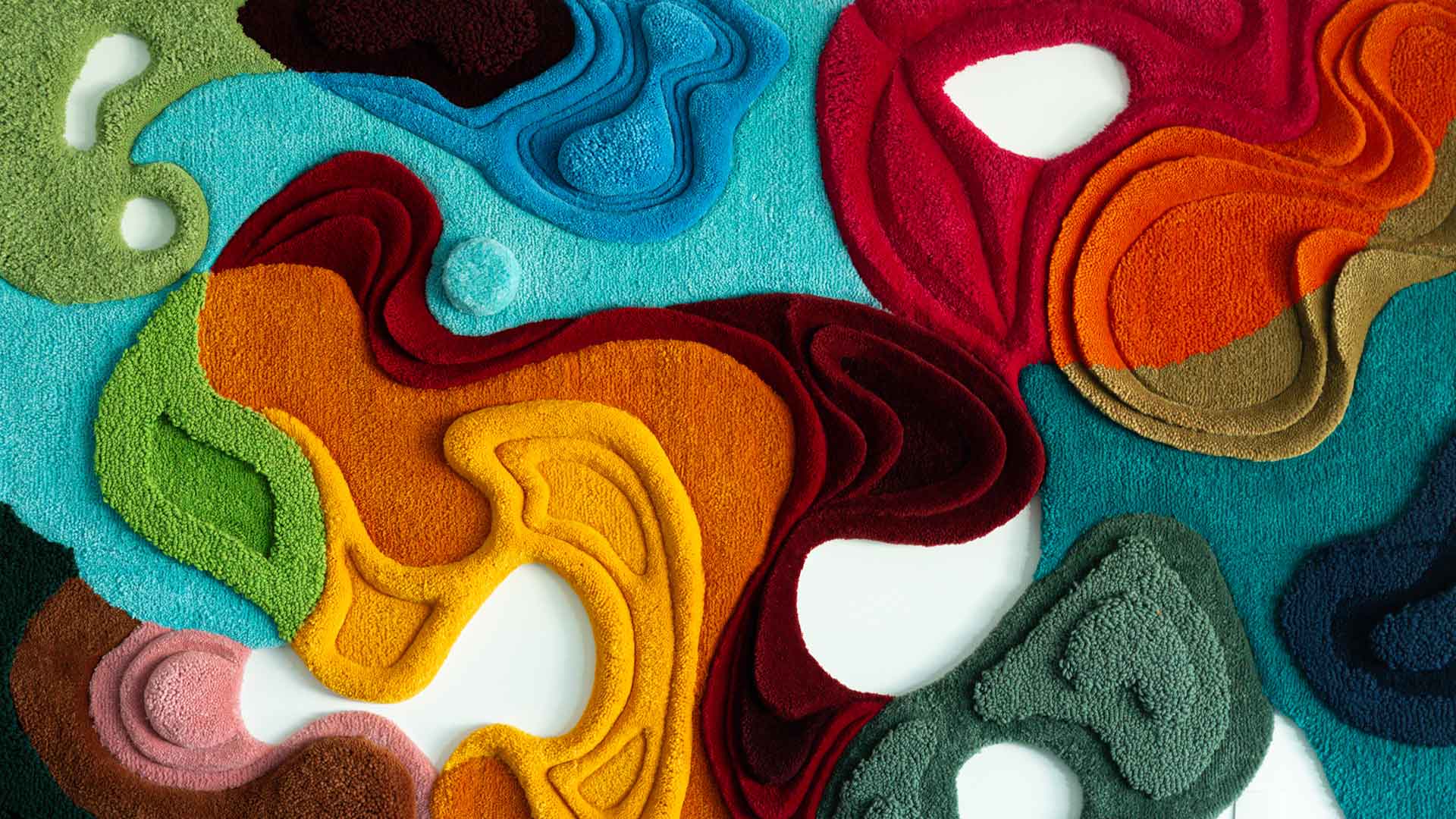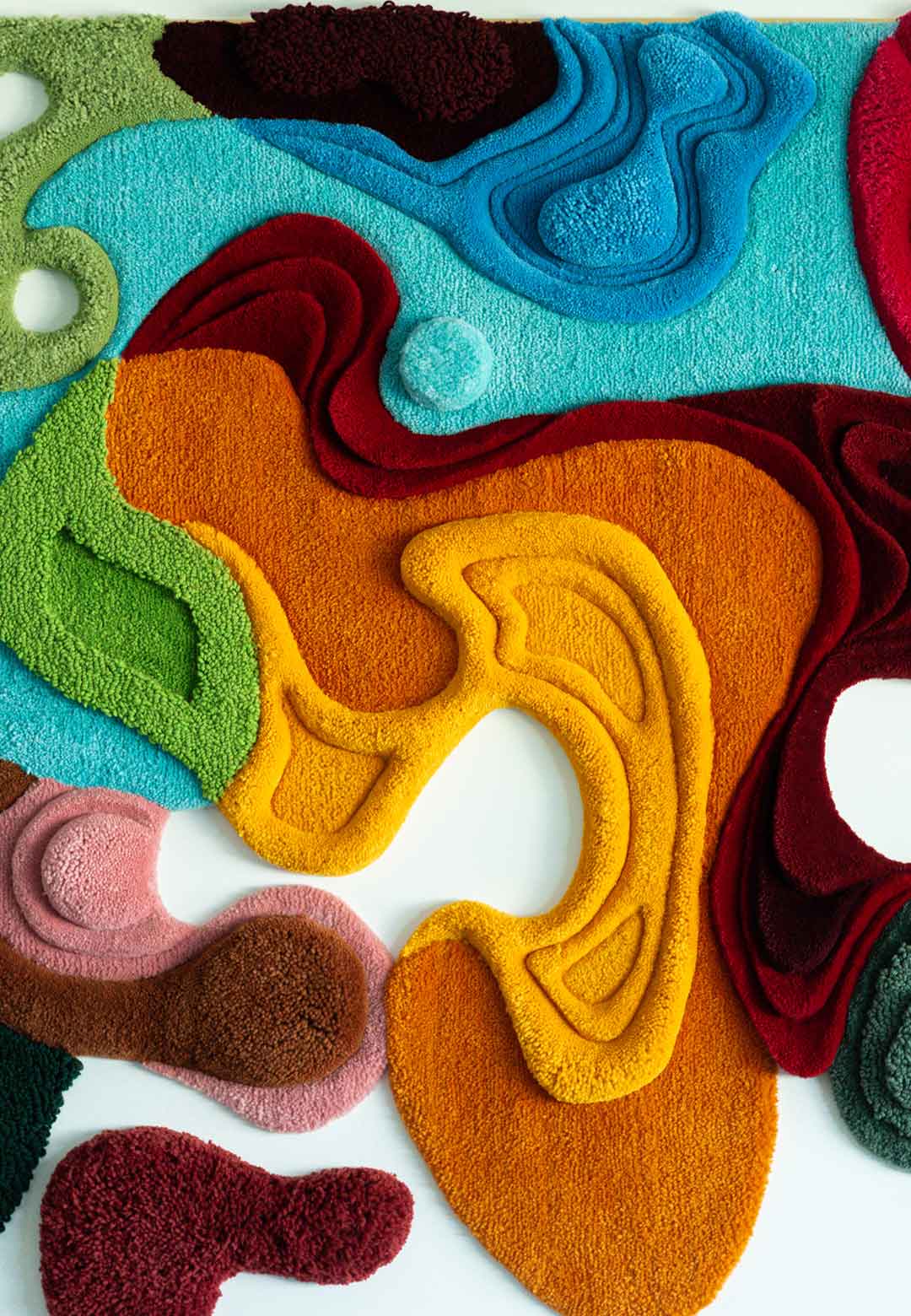Is it a tapestry? Textile art, perhaps? Or a rug design?
The overflowing allure of colours, depth and textures in Brazilian artist Mauro Frazão’s works would make one unravel all the possibilities of what it could be. They present themselves to the viewer as a story in the making— with simple words in threads and dramatic narrations in colours. Though textile art has been one of the oldest forms of art, 21st-century artists and designers are redefining the practice from a new perspective. For Frazão, the approach draws from the technique of tufting in weaving fluidic ripples of art from muses of life. “Art has the power to connect people, without walls. This rotates, expands and returns as food for new creations. This is the basis of my work— experiences. I realise that textile art, in a broad way, has a basis of unconscious collective connection, the raw material itself awakens a kind of welcome,” says Frazão about his evolution as a textile artist and working with the materiality of threads.
His works are inspired by artists such as Italian painter Caravaggio and Dutch painter Van Gogh, and his works explore the light and shadow of Caravaggio and the fluidity of Van Gogh. However, the direct influences reflect the design principles of Brazilian landscape architect Roberto Burle Marx. Frazão also mentions that his Curve series is inspired by the fluidic characters of Burle Marx’s landscape design. Talking about his process of creating art through tufting, Frazão narrates, “The works are a pretentious invitation to self-reflection. All series address a certain vulnerability and a desire for collective connection. So I think it's about that, about the desire for connection and expansion that debuts in a broad and somehow democratic way. I realise that the first reaction is one of impact, and, much of this comes from the colours, shapes and three-dimensionality of the works with wool. The second reaction comes from the urge to touch. People automatically accept the invitation to touch, that's what each work does. So, I feel like I'm managing to convey my message in a natural way. This sensory awakening of the first look is what establishes the connection between artist, work and people.”
Though tufting is an ancient technique used in the manufacturing of warm garments, it gained much attention as a therapeutic activity and craft during the lockdown days of Covid19. While people staying home found solace in social media platforms, more creators then ventured into the fields of exploring tufting and publicising the process and results on various such media. This also paved the way for many artists to be seen and gain much-deserved recognition. The artworks created through this method not only exhibit soothing and engaging aesthetics in the final product, but the process of creation itself is also meditative to witness. The more interesting part about this technique is that it is not only joyful for the observer but equally engaging and fluid for the creator. “It all starts with desire, this stage of creation can be totally intuitive, from an inspiration that already comes to mind all the design, composition of colours and lines, or under more elaborate research. This design is passed to the primary fabric already stretched on the frame, after which I create a kind of guide with heights, sublines and colour codes,” shares the artist.
Frazão's creative process begins with manual embroidery, then Russian dots, and finally tufting. However, in the current scenario, when time appears to be an issue for him, he employs tufting in 80 per cent of the parts. On the other hand, it helped him play with volumes and sculpt the pieces in varying heights of wool. This characteristic is only one factor that distinguishes Frazão’s works from other textile artists. The ebb and flow of different volumes, colours and textures, all created by the same material, extends the works to transcend the boundaries of art and design. While the works are more artistically aligned, his philosophies of creating them are nothing less than intricate design calculations.
In defining his approach towards both disciplines in his works, Frazão concludes, “Art and design are complementary in the construction of each work. Art is inserted in this invitation to the subjective, in the creation of each series and individual work, in the rescue of traditional manufacturing, in the elements of language and essentially in the intention to touch people with a deeper, emotional and sensory approach. I am an artist in eternal construction who uses design as a construction of the body of each work, in the translation in its first stage of presentation and in the materialisation of its lines and 3D aesthetics. The work can transit through the two segments in a free and complementary way and converging in a fluid way.”






 Sign in with email
Sign in with email










What do you think?